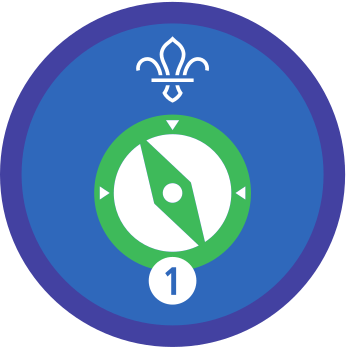Play map reading six-figure bingo
You’ll need
- Tables
- A4 paper
- Scissors
- Pens or pencils
- Erasers
- Bowls
- Chairs
- 1:25000 Ordnance Survey (OS) maps of the same area
Before you begin
- Make bingo cards by dividing a piece of A4 paper into 12 squares. You’ll need one of these per group. On each card, write the name of a symbol or landmark from the OS map you’re using. Use between 18 and 20 symbols or landmarks in total, and refer to this navigation factsheet to make sure they’re all different.
- On another piece of scrap paper, write down the six-figure grid reference for each landmark or symbol you’ve used. Cut each one out and put them in the bowl.
- Set up tables and chairs for each group, with one bingo card, pencils, a copy of the OS map and erasers.
It’s bingo time
- Split into groups of about four people and have each sit at a table. Check that each group has one bingo card and at least one pencil, and can see a map.
- Go over how to find a six-figure grid reference on a map.
- Give everyone a chance to practise this. Come up with a landmark or symbol for everyone to find that isn’t included in your bingo game. Go around and check that everyone has found it correctly and knows what they’re doing. Do this a few more times if needed.
- It’s time for bingo! Explain that a six-figure grid reference will be read out. Everyone should find it on their map. If a landmark or symbol on their bingo card is represented on the map at that grid reference, they can cross off this square from the card. The first to cross off all of their squares should shout ‘bingo!’.
- When everyone’s ready, take a piece of paper from the bowl and read out the grid reference. Make sure you give everyone enough time to find the spot on the map and check their card before reading out the next one.
- When someone shouts ‘bingo!’, check their crossed-off squares against the grid references you’ve read out.
- Help everyone understand by finding a specific symbol on the map to use as an example.
- Six-figure grid references help us locate where we are on a map within approximately 100m. When written down for navigation, they look like this: ‘668 754’. To read them it can be easier to split them into four sections. For example: 668 754 becomes (66) (8) (75) (4). Take the two large numbers for the first part and keep them in the same order: 66 and 75.
- Start at the bottom left corner of the map and find 66 on the horizontal axis and place a marker or your finger on the number. Find 75 on the vertical axis and place another marker or finger on the number.
- A helpful saying to remember for doing this is: ‘along the corridor and up the stairs’, with the horizontal numbers being ‘along the corridor’ and the vertical being ‘up the stairs’.
- Use the markers or your fingers and follow the lines onto the map itself, running along until they meet at the bottom left corner of a square. This is the square you’ll need.
- Within that square, apply the same principles as before with the smaller numbers. Go along the corridor with the first small number (8) and up the stairs with the second (4). If it helps, very lightly draw a 10x10 grid on the square you’re looking at to plot this part. Remember to rub it out afterwards.
- At that point, you should find the landmark or symbol needed.
- Have a look here if you need a more visual representation of this.
Reflection
You had to work together as a team to locate and identify the symbols on your bingo card. How did you communicate during the game and make sure everybody played a part?
Being able to read a six-figure grid reference will help you find your way around when you’re out hillwalking. Imagine you’re out on an expedition or hike: how will six-figure grid references help you if you get lost? How can you use the landmarks and other features around you to find where you are on the map?
Safety
All activities must be safely managed. You must complete a thorough risk assessment and take appropriate steps to reduce risk. Use the safety checklist to help you plan and risk assess your activity. Always get approval for the activity, and have suitable supervision and an InTouch process.
- Scissors
Supervise young people appropriately when they’re using scissors. Store all sharp objects securely, out of the reach of young people.
Simplify things a bit by having a go at the Treasure hunt activity. This uses four-figure grid references, which follows the same principle but with less to remember.
Enlarge the bingo cards and maps used to make them easier to read. Make sure everyone can see and reach a map, a pencil and an eraser.
All Scout activities should be inclusive and accessible.
Why not turn this into a four-figure grid reference bingo game and get everyone to teach a younger group how to find them with a game of bingo. Also, consider getting everyone to use the new skills they’ve learnt to plan a route for requirement four of the Stage 3 Navigator Staged Activity Badge.
Young people could run this game themselves by preparing their own bingo cards, finding their own symbols and landmarks and making the slips with grid references.
